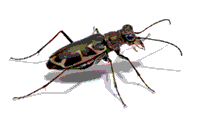Entomology, Department of

Department of Entomology: Faculty Publications
Document Type
Article
Date of this Version
4-2020
Citation
Frontiers in Plant Science April 2020, Volume 11, Article 451
Abstract
Exploiting the RNA interference (RNAi) gene mechanism to silence essential genes in pest insects, leading to toxic effects, has surfaced as a promising new control strategy in the past decade. While the first commercial RNAi-based products are currently coming to market, the application against a wide range of insect species is still hindered by a number of challenges. In this review, we discuss the current status of these RNAi- based products and the different delivery strategies by which insects can be targeted by the RNAi-triggering double-stranded RNA (dsRNA) molecules. Furthermore, this review also addresses a number of physiological and cellular barriers, which can lead to decreased RNAi efficacy in insects. Finally, novel non-transgenic delivery technologies, such as polymer or liposomic nanoparticles, peptide-based delivery vehicles and viral- like particles, are also discussed, as these could overcome these barriers and lead to effective RNAi-based pest control.


Comments
Copyright © 2020 Christiaens, Whyard, Vélez and Smagghe.